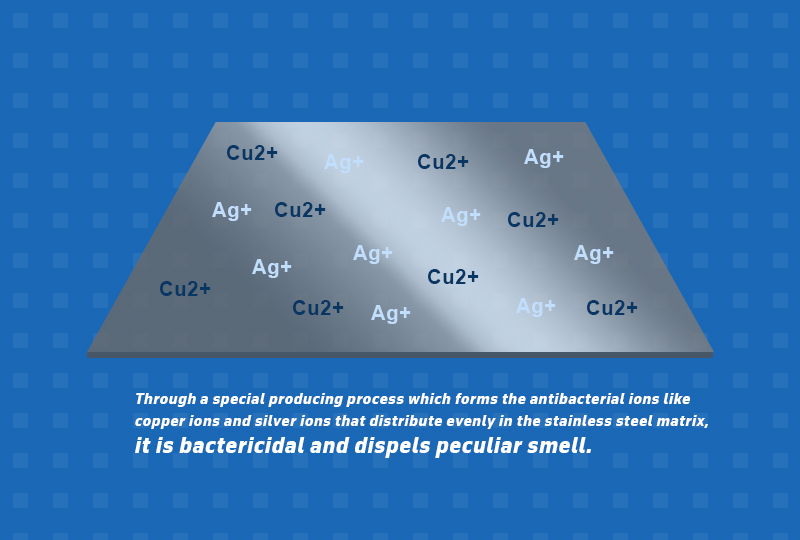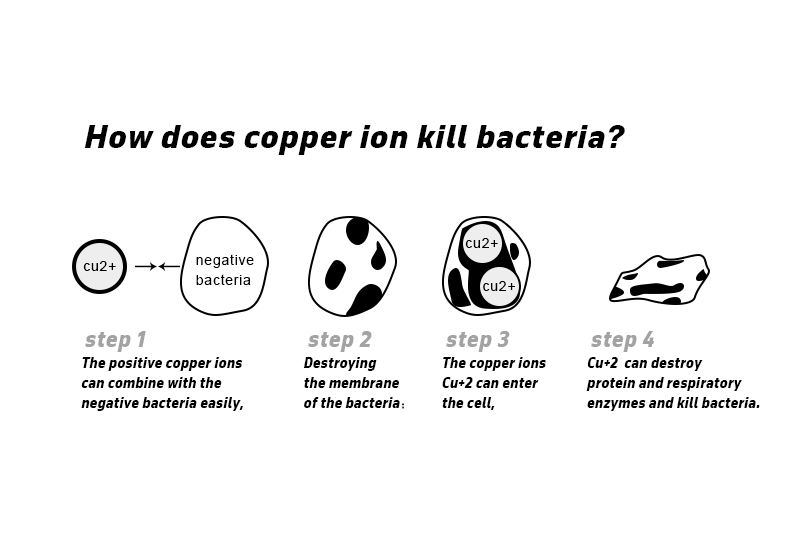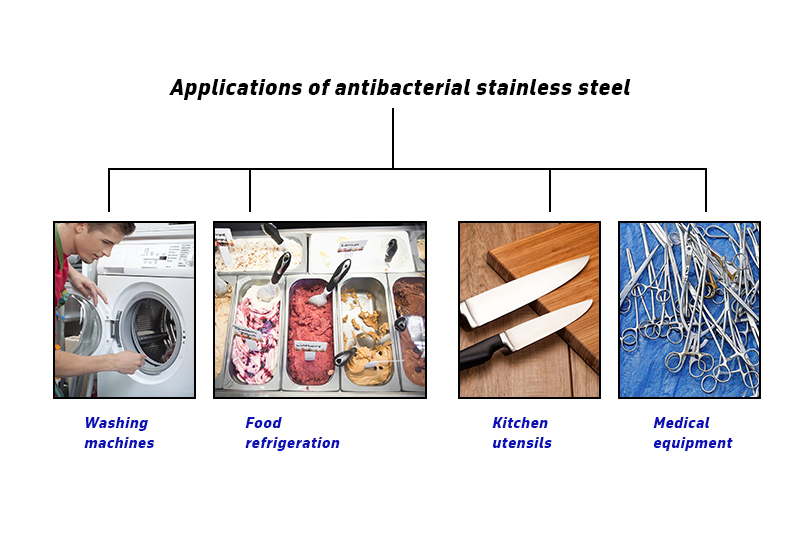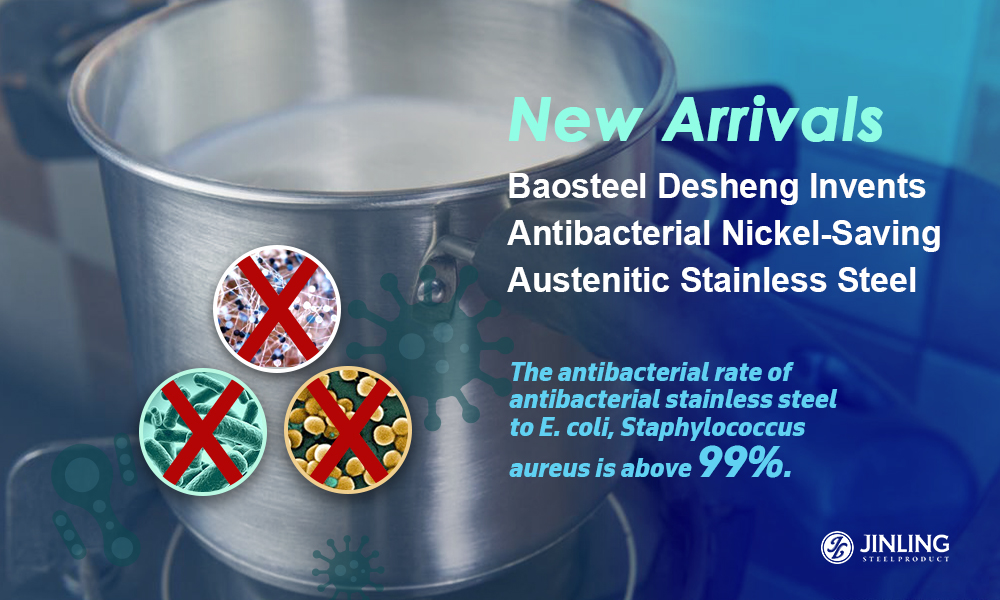With the Covid-19 pandemic spreads over the world, Baosteel Desheng improved the antibacterial stainless steel products and developed two new products of antibacterial nickel-saving austenitic stainless steel. Tested by an authority, the products pass the antibacterial test, showing that the products have a broad range of antibacterial to E. coli and Staphylococcus aureus.

The antibacterial stainless steel is invented by adding copper, silver and other elements. Through a special producing process which forms the antibacterial ions like copper ions and silver ions that distribute evenly in the stainless steel matrix, it is bactericidal and dispels peculiar smell. This product has a wide range of applications, such as cookers, tableware, medical tools, household appliances, infrastructure, etc..

Milk Test
In these two pictures, The left container is made by regular stainless steel, and the right container is an antibacterial stainless steel container. Both containers were poured with milk. Placing for two days, the milk in the normal turned dour but the milk in an antibacterial wares remains.
It is not the first time Baosteel steps in developing the antibacterial. In 2008, it firstly invented the ferritic antibacterial stainless steel in China.
What is antibacterial stainless steel?
Generally, the difference between stainless steel and antibacterial stainless steel is that some special metallic elements are added in stainless steel enabling antibacterial effect, such as copper. Antibacterial stainless steel containing copper is 0.5%~1% more than stainless steel in copper content.

Antibacterial stainless steel has a property against the broad range of antibacterial, having great effects on Gram-negative bacteria, positive bacteria, and mold. Tested by an authority, the antibacterial rate of antibacterial stainless steel to E. coli, Staphylococcus aureus is above 99% and it has an obvious elimination effect on other bacteria like Candida albicans, Fusarium oxysporum, etc.
Why copper can endow stainless steel with antibacterial?
According to a stainless steel engineer, when the bacteria contacts with the antibacterial stainless steel, the copper element will separate Cu+2 which kills the bacteria.
Why Cu+2 can kill the bacteria?

The positive copper ions can combine with the negative bacteria easily, destroying the membrane of the bacteria, viruses, and microorganisms so that the copper ions Cu+2 can enter the cell. Because Cu+2 is a heavy metal ion, it can destroy the bacteria’s protein and respiratory enzymes, constrain and destroy the activity of the catalyst enzymes needed for their metabolism, thereby inhibiting and killing bacteria, viruses, and microorganisms.
The copper element is effective in anti-E. coli and Staphylococcus aureus. When the content of copper in stainless steel is up from 1.5% to 3.5%, the antibacterial rate against E. coli rises from 75.2% to 99.9%, and the antibacterial rate against staphylococcus rises from 80% to 99%.
Who is producing antibacterial stainless steel?
People now are more concerned about anti-bacteria, so the research and appliances of antibacterial materials become popular and wide-used. For now, Tisco, Baowu, Puxiang(Zhangjiagang), Jisco and Tsingshan produce antibacterial stainless steel.

Antibacterial stainless is used widely in our daily life and protecting us in many ways. The antibacterial rate of ferritic antibacterial stainless steel is above 99%, which is used in washing machines, food refrigeration; martensitic antibacterial stainless steel is mainly used in the production of kitchen knives and kitchen scissors; austenitic antibacterial stainless steel is suitable for medical equipment, food, and other related equipment.
